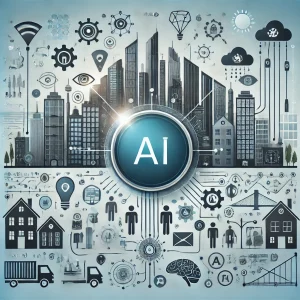How Technology is Shaping the Future of Remote Work

The landscape of work has been rapidly changing over the past few decades, with one of the most significant shifts occurring in recent years: the rise of remote work. While remote work has been growing steadily, the COVID-19 pandemic accelerated its adoption, with millions of workers around the world making the transition to working from home. As businesses and employees began to embrace this new normal, technology emerged as a critical enabler of remote work, making it easier for individuals to connect, collaborate, and perform tasks from virtually anywhere.
This article explores how technology is shaping the future of remote work, driving productivity, enhancing collaboration, and fostering flexibility for both employers and employees.
1. The Role of Communication Tools in Remote Work
One of the primary challenges of remote work is maintaining effective communication. When employees are spread across different locations, traditional face-to-face meetings and spontaneous office conversations are no longer feasible. However, advancements in communication tools have made it possible for remote teams to stay connected and collaborate seamlessly.
Platforms like Zoom, Microsoft Teams, and Google Meet have become staples for video conferencing, enabling teams to conduct virtual meetings, webinars, and brainstorming sessions. These tools have evolved to support a wide range of communication needs, from one-on-one meetings to large-scale conferences with thousands of participants. Features such as screen sharing, real-time chat, and breakout rooms have made remote collaboration more interactive and engaging, replicating many aspects of in-person meetings.
In addition to video conferencing, instant messaging tools like Slack, Microsoft Teams, and Discord have become essential for real-time communication. These platforms allow teams to chat instantly, share files, and track ongoing projects. The integration of these tools with other software, such as project management and file-sharing applications, has further streamlined communication and collaboration for remote teams.
2. Cloud Computing: Enabling Access to Data and Collaboration
Cloud computing has been a game-changer for remote work, providing employees with the ability to access files, applications, and data from anywhere with an internet connection. Traditional office setups relied on local servers and physical infrastructure to store and manage data. In contrast, cloud computing allows businesses to store and share data securely over the internet, reducing reliance on physical office spaces and providing flexibility for remote employees.
With cloud-based solutions like Google Drive, Dropbox, and Microsoft OneDrive, remote teams can collaborate in real time on documents, spreadsheets, presentations, and other projects. Cloud-based project management tools, such as Asana, Trello, and Monday.com, help teams track tasks, assign responsibilities, and monitor progress from anywhere. These platforms ensure that all team members have access to the latest information and can work together without the need to be in the same physical location.
Moreover, cloud computing enables businesses to scale their IT infrastructure easily, allowing them to accommodate a growing remote workforce without significant investment in on-premises hardware. This scalability is particularly valuable for startups and small businesses looking to expand their operations with minimal upfront costs.
3. Artificial Intelligence and Automation in Remote Work
Artificial intelligence (AI) and automation are playing an increasingly important role in remote work, streamlining routine tasks, improving decision-making, and enhancing productivity. AI-powered tools are helping businesses manage everything from customer support to scheduling meetings and analyzing data.
One of the most notable applications of AI in remote work is in virtual assistants. Virtual assistants like Amazon’s Alexa, Apple’s Siri, and Google Assistant can help employees stay organized by managing schedules, setting reminders, and answering questions. These AI-driven assistants can integrate with other tools, such as calendar apps and project management software, to automate time-consuming tasks and improve efficiency.
In addition to virtual assistants, AI is transforming customer service through chatbots and automated systems. Chatbots are increasingly used by businesses to provide 24/7 support, answer frequently asked questions, and resolve common issues without human intervention. This frees up employees to focus on more complex tasks while ensuring that customers receive prompt assistance, even outside regular working hours.
Automation is also being applied to repetitive tasks across industries, such as data entry, invoice processing, and employee onboarding. Tools like Zapier and IFTTT (If This Then That) allow remote workers to automate workflows and integrate different applications, saving time and reducing the risk of human error. By automating these mundane tasks, employees can focus on higher-value work that requires creativity and problem-solving.
4. Cybersecurity: Protecting Remote Work Environments
As remote work has become more widespread, cybersecurity has become a top priority for businesses. With employees accessing company networks and sensitive data from various locations, the risk of cyberattacks and data breaches has increased. This has led to the development of robust cybersecurity technologies to protect remote workers and the organizations they work for.
One of the key technologies enabling secure remote work is Virtual Private Networks (VPNs). VPNs create a secure, encrypted connection between remote workers and their company’s internal network, preventing unauthorized access to sensitive information. Many businesses now require employees to use VPNs to access internal resources securely.
Additionally, multi-factor authentication (MFA) has become a standard practice for enhancing security. MFA requires users to provide multiple forms of identification, such as a password and a fingerprint or one-time code, before gaining access to company systems. This added layer of security reduces the likelihood of unauthorized access and protects against potential cyber threats.
Cybersecurity solutions also include endpoint protection, which ensures that remote devices—such as laptops, smartphones, and tablets—are secure and free from malware. With the growing use of personal devices for work, endpoint security is essential in maintaining a secure remote work environment.
5. Collaboration and Virtual Workspaces
As remote work continues to rise, the need for digital collaboration tools and virtual workspaces has also grown. Tools like Miro, Figma, and Mural are facilitating remote brainstorming, creative collaboration, and team interaction in ways that mimic physical office spaces. These virtual whiteboards and collaboration tools allow teams to share ideas, visualize concepts, and work on designs in real time, creating an immersive environment for innovation.
Additionally, virtual reality (VR) and augmented reality (AR) are beginning to play a role in remote work, especially in industries such as architecture, engineering, and design. VR and AR tools can help remote teams collaborate on 3D models, simulate real-world environments, and interact with virtual prototypes, enhancing the creative process and improving project outcomes.
The concept of a “virtual office” is also gaining traction, with platforms like Gather and Spatial providing immersive, virtual spaces where employees can meet, collaborate, and socialize in a digital environment. These platforms are designed to replicate the social and collaborative aspects of in-person offices, allowing employees to interact with each other in a more engaging and dynamic way.
6. The Future of Remote Work: Hybrid Models and Continued Innovation
Looking ahead, the future of remote work is likely to involve a mix of remote and in-office work—what is known as a hybrid work model. As organizations recognize the benefits of remote work, many are adopting hybrid models to provide flexibility to employees while maintaining some level of in-person collaboration. Technology will continue to play a central role in making these hybrid models effective by supporting seamless transitions between remote and in-office work.
Future innovations in AI, machine learning, and virtual reality will further enhance remote work, enabling even more immersive and efficient work environments. As remote work becomes a permanent fixture in the modern workplace, companies will continue to invest in technologies that promote collaboration, security, and employee well-being.
Conclusion
Technology has been the driving force behind the growth and success of remote work, enabling employees and organizations to adapt to new ways of working. From communication tools and cloud computing to AI-powered assistants and cybersecurity solutions, technology is not only making remote work more efficient but also enhancing collaboration, productivity, and security. As the future of work continues to evolve, technology will remain a key enabler of flexible, innovative, and sustainable remote work environments. The ability to harness these technologies will determine the success of businesses and the overall work experience for employees worldwide.





